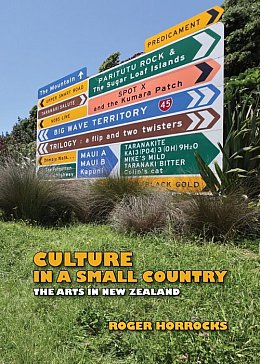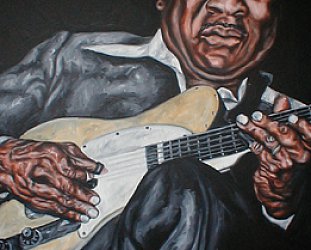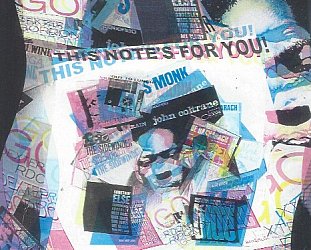Graham Reid | | 1 min read

In some small way, Nick Bollinger had it easy for his current and excellent Jumping Sundays: The Rise and Fall of the Counterculture in Aotearoa New Zealand. His subject was defined by what it wasn't.
Auckland academic/writer/critic Roger Horrocks has it tougher with Culture in a Small Country: The Arts in New Zealand because his premise is so loaded and subjective it can be deployed into ring-fencing of practices and beliefs with “No Trespassing” signs.
“Culture” is a fearsomely contentious concept today in this country but Horrocks defines his approach as placing artists and their practices – in writing, film, music, the digital age – within the broad landscape: culture as malleable within diverse and changing contexts, part of ‘the semiotic environment, the zone of worlds, sounds and images in which we live.’
So rather than a chapter-length histories of New Zealand literature, for example, writers and books are located within the necessary adjuncts of publishing, promotion, retail, reviewing and readers. In the visual arts he accommodates public galleries, private dealers, art schools and curators in his multiverse -- to use common parlance -- which also includes amateur critics and public figures resistant to change, often more concerned with morality than aesthetics: ‘A few lines and colours on a sheet of canvas can make us more irate than a major crime,’ observed Australasian poet William Hart-Smith.
Horrocks writes of, ‘trying to reach beyond a specialised, academic audience to a wider range of readers . . . to make work clear and avoid jargon.’ Not afraid to quote Wikipedia, he laments the dismissal of historical perspective where art, for some, is reflexively repudiated as ‘the product of 'old white guys.’ His decades-deep personal experience of our cultures make for readable and informative essays which consider how the arts and artists – mostly from the mid-20th century to today's pandemic world – struggled in a country distant from international attention, artists labouring to find an audience and income in a climate of indifference, if not antipathy.
His stand-alone chapters – by osmosis touching on others – allow for insightful overviews, prevailing socio-political contexts and acknowledge how male-dominated the arts were (and in many areas remain so) but also . . .
.
To read the rest of this review as well as the review of Nick Bollinger's Jumping Sundays, go to Kete Books here.
For an extract from Bollinger's book go here.





post a comment